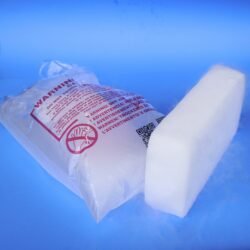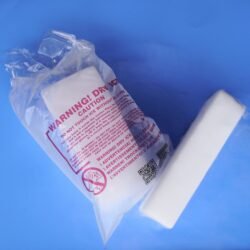For hunters and anglers, preserving your catch or game is just as important as the hunt itself. Without proper storage, the taste, texture, and quality of your hard-earned prize can quickly deteriorate. This is where dry ice for hunting steps in as a game-changer.
Dry ice isn’t just for keeping things cold—it’s about maintaining the integrity of your harvest, preventing spoilage, and extending freshness. Whether you’re heading back from a long fishing expedition or hauling prized game from the wild, using dry ice ensures that your bounty remains in peak condition.
But its benefits don’t stop there. Dry ice plays an essential role in various industries, from preserving biomedical products to creating mesmerizing fog effects at events. In this guide, we’ll explore the best practices for using dry ice in hunting and fishing storage and uncover its surprising applications.
Why Dry Ice for Hunting is a Game-Changer
Regular ice is no match for the efficiency of dry ice. It melts quickly, leaving behind a soggy mess that compromises the quality of your meat or fish. Dry ice, however, offers a superior alternative.
- Maintains Ultra-Low Temperatures: Dry ice keeps food frozen at -109.3°F, preventing any risk of thawing.
- Prevents Moisture Build-Up: Unlike traditional ice, dry ice sublimates directly from solid to gas, leaving no water behind.
- Compact and Space-Saving: Dry ice takes up less space in your cooler, making it ideal for long trips where storage is limited.
Best Practices for Using Dry Ice in Hunting and Fishing Storage
Using dry ice effectively requires more than just tossing it into a cooler. Follow these best practices to maximize its cooling potential and protect your catch.
1. Pack Dry Ice at the Bottom
Always place dry ice at the bottom of your cooler to ensure that cold air circulates upward. Layer the meat or fish on top, separated by a barrier to prevent direct contact with the dry ice.
2. Use Insulated Barriers for Protection
Wrap your harvest in breathable materials before placing it in the cooler. This prevents the meat from freezing too quickly and maintains its natural texture.
3. Choose the Right Form of Dry Ice
For maximum efficiency, selecting the right type of dry ice product is essential.
- Dry Ice Pellets: Ideal for packing around irregularly shaped items like game meat or fish. These pellets provide even cooling and fit easily into tight spaces.
- Gel Packs: Often used alongside dry ice, gel packs maintain consistent cold temperatures for extended periods, preventing rapid temperature fluctuations.
By selecting the right combination of dry ice products, you enhance the overall cooling performance during storage or transport.
4. Allow Ventilation to Prevent Pressure Build-Up
Dry ice sublimates into carbon dioxide gas, which can create pressure inside an airtight container. To avoid this, ensure that your cooler is slightly vented.
Dry Ice in Action: How Hunters and Anglers Use It
Dry ice is trusted by hunters and anglers who demand consistent quality. Whether it’s a weekend fishing trip or a week-long hunt in the backwoods, dry ice ensures that the meat stays as fresh as the moment it was harvested.
- For Fish: Keep fillets firm and fresh by layering dry ice at the base of the cooler, with the fish placed securely on top.
- For Game: Wrap large cuts of venison or game in insulating material to prevent freezer burn before placing them in a dry ice-packed cooler.
For longer transport or multiple-day expeditions, dry ice extends the freshness of your harvest without fail.
Enhancing Dry Ice Efficiency with Silver Mylar Bags
For those who want to take dry ice storage to the next level, using a silver mylar bag provides an added layer of protection. These bags offer superior insulation, reflecting heat and minimizing temperature fluctuations, making them ideal for enhancing the performance of dry ice during transport and storage.
Why Silver Mylar Bags Matter
Silver mylar bags act as a thermal barrier, preventing heat from penetrating the cooler and slowing down the sublimation of dry ice. This results in longer-lasting cooling power and improved protection of your harvest.
- Prevents Freezer Burn: Mylar bag lock in moisture and prevent dry air from affecting the meat.
- Improves Temperature Stability: By reflecting external heat, a silver mylar bag helps maintain a consistent cold environment.
When paired with dry ice pellets or gel packs, silver mylar bags significantly extend storage times and ensure that game and fish remain in top condition.
Other Common Uses for Dry Ice
Dry ice has many practical applications across various industries. It is widely used for cooling, preservation, and creating visual effects. Some of the most common Dry Ice uses include:
- Dry ice for food storage keeps perishable items fresh by maintaining ultra-low temperatures during storage and transport.
- Dry ice for medical research and laboratory uses ensures that biological samples and sensitive materials remain stable at controlled temperatures.
- Dry ice for biomedical product storage protects temperature-sensitive biomedical products during transport by maintaining the required cold chain.
- Dry ice for cancer patient cold cap therapy storage maintains cold caps at the necessary temperatures to reduce hair loss during chemotherapy.
- Dry ice for making seltzer and other carbonated beverages carbonates drinks by releasing carbon dioxide during sublimation.
- Dry ice for making fog creates dense, low-lying fog effects that enhance visual experiences at events and performances.
- Dry ice for protection against insects displaces oxygen in enclosed spaces, making it impossible for insects to survive.
Choosing the Right Dry Ice Product for Your Needs
Not all dry ice products are created equal. Depending on your specific needs, choosing between dry ice pellets and gel packs can make a significant difference.
- Dry Ice Pellets: Perfect for filling tight spaces or wrapping around irregularly shaped objects like fish or game meat. Pellets provide uniform cooling and are ideal for long-distance transportation.
- Gel Packs: Ideal for situations where steady, consistent cooling is required over extended periods. Gel packs maintain a steady temperature, preventing fluctuations that could affect sensitive materials.
When used together, these products create an unbeatable combination that ensures maximum cooling performance.
Dry Ice Safety: Best Practices to Protect Yourself
While dry ice is highly effective, handling it safely is essential to avoid potential hazards.
- Use Protective Gloves: Always handle dry ice with insulated gloves to prevent frostbite.
- Store in a Ventilated Area: Avoid storing dry ice in airtight containers to prevent pressure buildup.
- Never Inhale Carbon Dioxide: Dry ice releases carbon dioxide gas as it sublimates, which can be harmful in confined spaces.
Adhering to these safety measures ensures that you get the best performance from dry ice while staying safe.
Final Thoughts: Why Dry Ice is Essential for Hunters and Anglers
Dry ice is more than just a cooling agent—it’s a tool that preserves the quality, taste, and safety of your harvest. For hunters and anglers, ensuring that game and fish remain fresh during transport or storage is essential. By incorporating a silver mylar bag into your storage system, you enhance the efficiency of dry ice, keeping your prized catch at its best for longer periods.
Beyond hunting and fishing, dry ice proves its value in industries where precision and reliability are critical. From preserving biomedical products to creating fog for events, dry ice remains a powerful solution in scenarios where temperature control makes all the difference.
By mastering the use of dry ice, you not only protect the quality of your harvest but also unlock the potential of a versatile tool that serves multiple industries.




